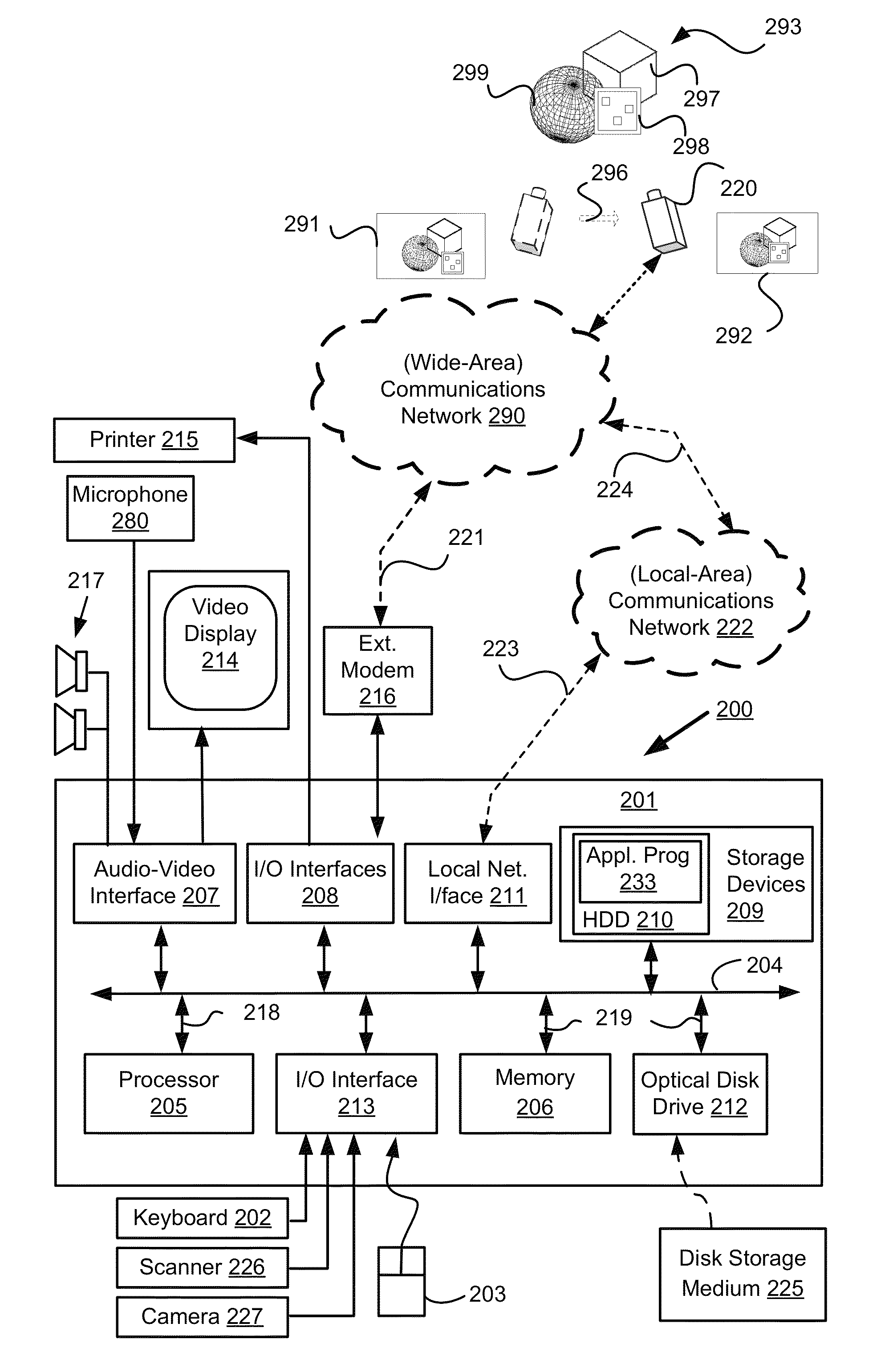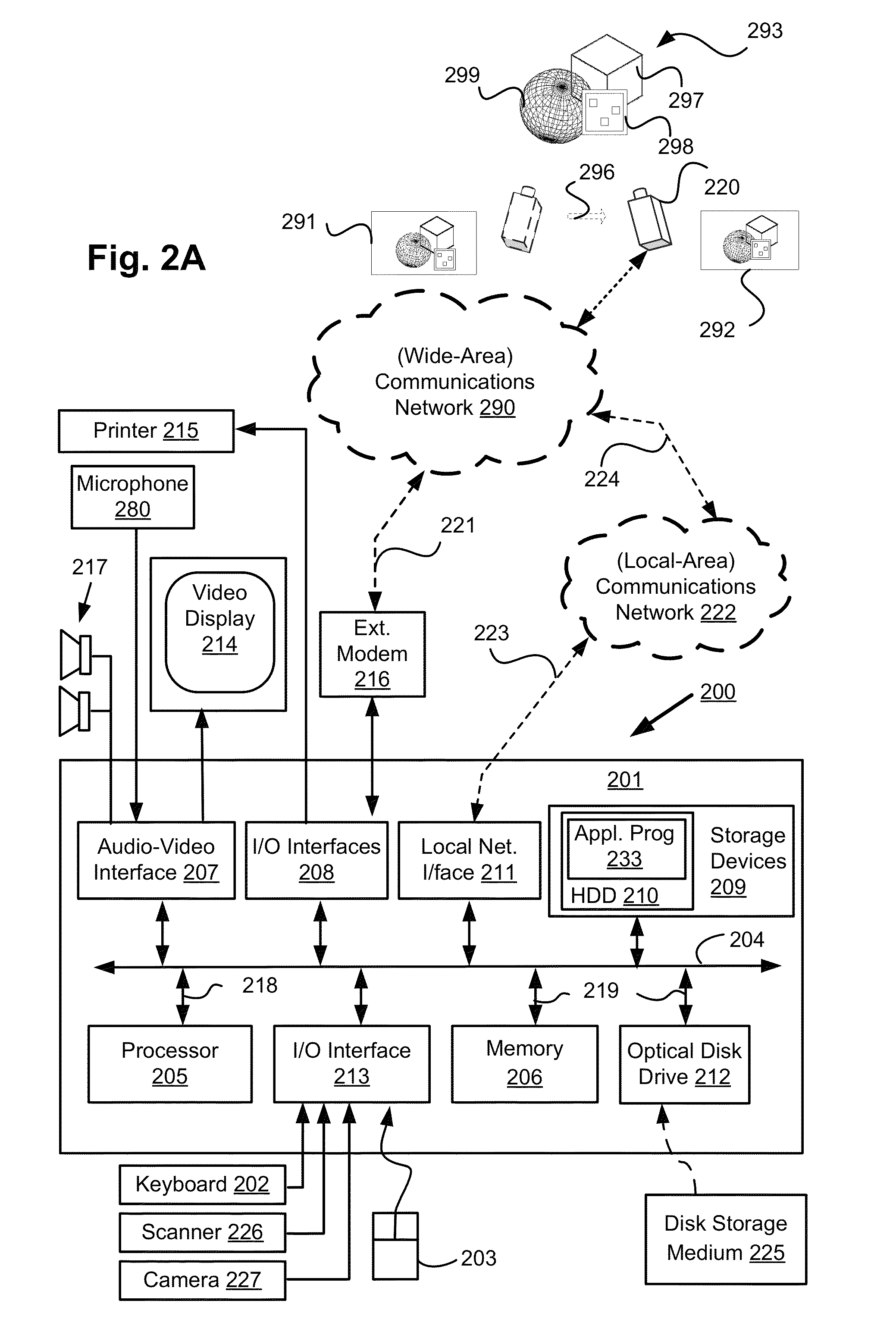Key-frame selection for parallel tracking and mapping
a keyframe selection and mapping technology, applied in the field of augmented reality (ar) systems, can solve the problems of insufficient map accuracy, difficult and time-consuming creation of comprehensive maps, and computationally expensive problems
- Summary
- Abstract
- Description
- Claims
- Application Information
AI Technical Summary
Benefits of technology
Problems solved by technology
Method used
Image
Examples
Embodiment Construction
[0072]Where reference is made in any one or more of the accompanying drawings to steps and / or features, which have the same reference numerals, those steps and / or features have for the purposes of this description the same function(s) or operation(s), unless the contrary intention appears.
[0073]FIG. 2A shows a video system 200. The video system 200 comprises a moving camera 220 for capturing images of, for example, a scene 293. The scene 293 is static. The moving camera 220 is connected to a communications network 290. The communications network 290 may be a wide-area network (WAN), such as the Internet, a cellular telecommunications network, or a private WAN.
[0074]As seen in FIG. 2A, the video system 200 also includes: a computer module 201; input devices such as a keyboard 202, a mouse pointer device 203, a scanner 226 and a microphone 280; and output devices including a printer 215, a display device 214 and loudspeakers 217.
[0075]An external Modulator-Demodulator (Modem) transcei...
PUM
 Login to View More
Login to View More Abstract
Description
Claims
Application Information
 Login to View More
Login to View More - R&D
- Intellectual Property
- Life Sciences
- Materials
- Tech Scout
- Unparalleled Data Quality
- Higher Quality Content
- 60% Fewer Hallucinations
Browse by: Latest US Patents, China's latest patents, Technical Efficacy Thesaurus, Application Domain, Technology Topic, Popular Technical Reports.
© 2025 PatSnap. All rights reserved.Legal|Privacy policy|Modern Slavery Act Transparency Statement|Sitemap|About US| Contact US: help@patsnap.com



